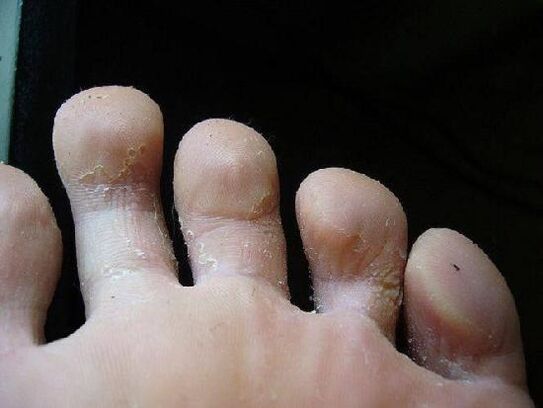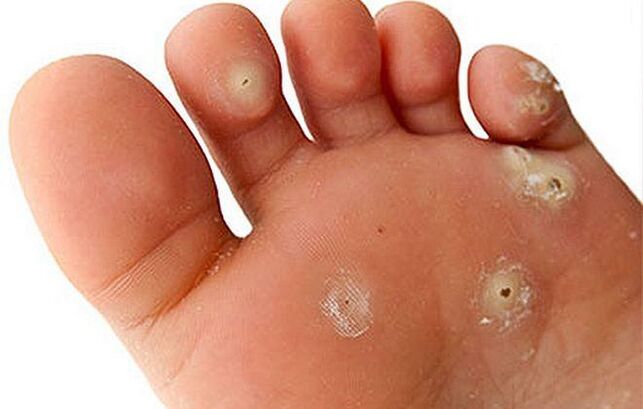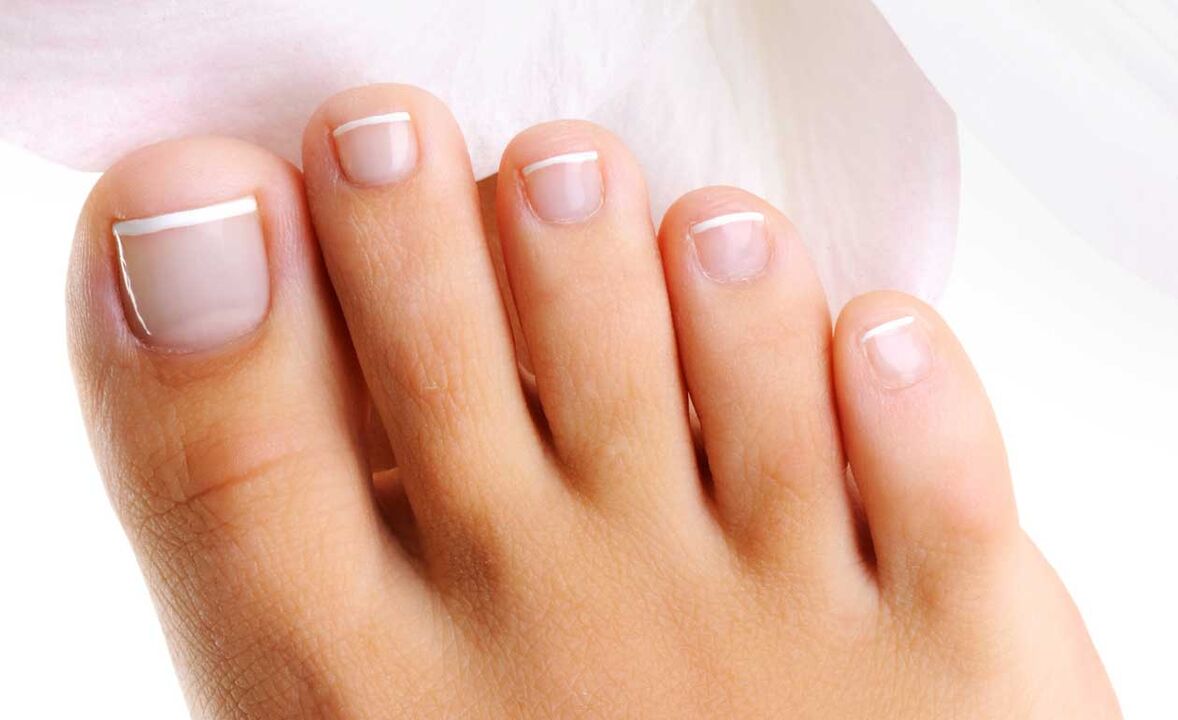Fungi on the feet is a seasonal disease and manifests itself especially during the season of wearing closed shoes. Fungal foot infections don't get as much attention as other types of fungi, such as toenail fungus. This is because the foot is not visible unless you specifically look at it. And the first manifestations, not strong, are attributed to everyday reasons.
The easiest way to test yourself for foot fungus is to sniff your shoes! A bad smell is a sign of a fungal infection. Although the mushrooms themselves do not emit a smell, but their waste. . . Plus the waste of microorganisms that have settled in wounds formed by fungal disease. And these are mostly staphylococci. All of this taken together is what causes unpleasant foot and shoe odors.
Combing the skin over the affected area causes the infection to spread!
When the feet are in warm, closed shoes for a long time, they sweat profusely. The fungus, which under normal conditions is not activated, once in an ideal environment for itself, begins to actively develop. Therefore, the second name of this disease appeared - "Athlete's foot". Fungal disease of the feet caused by several types of fungi. And since athletes spend most of their time in tight, closed-toe shoes, they mostly suffer from this yeast infection.
Athlete's foot is quite common. With it, a fungal infection of the sole of the foot or areas of the skin between the toes occurs.
Such fungal infections can be caused by the appearance at the foot of one of the varieties of a parasitic colony of an infectious and very contagious disease called fungus on the feet.
Fungal diseases that cause extensive skin damage are caused by various types of fungi, the nature of which is discovered in the study of scans.

How does the fungus manifest itself
On the skin of the legs, the pathology is manifested first in small areas prone to peeling, then the spot spreads with uneven edges, and the mycosis becomes more pronounced.
The activity of the manifestation of symptoms of the fungus on the legs can be both lightning-fast and quite slow. Because it all depends on the strength of a person's immunity and the type of microorganism that caused this disease.
The types of foot fungus are quite different and they manifest themselves in their own way, but if a person has pathological changes on the feet, then you should find out more about the specialists. Mycologists will explain to you what a fungus is and teach you how to fight it.
What does foot fungus look like?
Foot fungus is accompanied, in most cases, by "athlete's foot" - it looks like barely noticeable scaly skin. As the pathology spreads, the color of the skin turns red and the changes become more noticeable. In addition, the disease of the feet looks like large areas with large flakes of dry skin, sometimes the signs are located on one side, sometimes on both sides of the foot. The localization of the foot fungus is usually located at the bottom of the limbs, and the appearance of the limb depends on the degree of development of the pathology.
Differences in species such as:
- a very dense horny layer on the sole;
- the flakes begin to peel the honey with the fingers;
- the skin is inflamed;
- the lesion of the feet also looks like bubbles.
The fungus formed on the legs looks quite expressive, so a person should notice specific manifestations and consult a doctor.

Causes of foot fungus
What to do if a fungus appears? To begin with, it is worth finding out the reasons for its occurrence and wondering where exactly the spores could be picked up and why the body did not respond correctly.
On the onset of athlete's foot formation, on the reasons that precede the development of pathogenic flora, mycologists say the following: a fungus on the feet of the feet can develop if a person uses socks or shoesof an infected person, and also do not wear slippers in places where masses of people pass, namely, in public baths, saunas and swimming pools, as this is where the most suitable soil for the forehead isbacterial.
How to identify fungi on the feet
The development of yeast infection, a fungal disease, provokes at a fairly high rate, and especially quickly such manifestations develop in case of concomitant chronic diseases. Diseases of the feet can be determined independently, but in order not to confuse each abrasion of the skin with signs of fungus on the legs, it is worth considering the condition of the cover, as well as the appearance of the skin. under the toes.
The fungus of the legs is quite diverse in its symptoms, since the types of fungus on the legs are also not limited to one, and each of them has its own characteristic manifestation.

What does a fungus look like on the foot
And what the skin fungus on the legs may look like will determine what its species is. So to speak, the mycelium will leave its "calling card" when it arrives.
Sometimes people with a history of such pathology do not even know it, they just see too dry a blanket on their legs, but they mean it should be.
General symptoms usually look like this:
- the appearance of microcracks;
- slight itching, especially between the toes;
- severe coat;
- sometimes swelling and pain in places where erosion occurs;
- rarely, but bleeding occurs.
- deep cracks may appear.
How to cure foot fungus
Treatment of the fungus on the feet is a long process, but if the preparatory phase is carried out correctly, that is, when diagnosing it is found out which parasitic pathogen in the body, then treatment can be faster.
It is necessary to treat skin fungi comprehensively, using both drugs taken internally and external medical pharmacological agents.
Athlete's foot is treatable with careful study of all affected areas, this should be made easier with treatment.
To find out how to treat the fungus, you need to consult with mycologists. They will be able to talk in detail about the drugs that can cope well with the disease.
The treatment of foot disease can be divided into several parts. An important primary task is to strengthen the most vulnerable areas and rehabilitate the areas affected by the disease. It is important to know that the feet should always be dry and clean:
- and also the shoes should be made of breathable materials;
- replaceable cotton socks should become a good absorbent that traps moisture;
- after the feet have been in shoes all day, it is necessary to rinse them thoroughly and lubricate them with a special agent prescribed by a doctor.
It is also good to use special powders that help keep your feet dry.
The next part of the treatment involves the use of antifungal drugs, such as:
- ointments with a special composition;
- a cream with a texture lighter than an ointment, which means with a deeper angle of penetration inside;
- aerosols, the smallest particles of which penetrate the most difficult to access places.
And although almost all pharmacological preparations intended for the elimination of pathogens are sold in the network of retail pharmacies without a special prescription, consultation of an experienced specialist will not only be superfluous, but on the contrary will help to have an effectcomplex about this disease.
The most common reasons why the treatment does not give an effect are, first of all, a disturbed treatment regimen and irregular use of funds.
There are also the following reasons:
- many patients do not understand the severity of the disease and do not accept the proposed treatment;
- about a third of patients do not go to specialists at all and occasionally use self-medication which, for obvious reasons, does not bring any relief;
- many patients do not believe that it is necessary to accurately diagnose one type of pathogen;
- many, as soon as the first positive results are achieved, stop treatment on their own.
How is foot fungus treated with folk remedies
You can also treat fungus on the feet with folk remedies at home.
There is a good tool, you can do it yourself.
Ointment that destroys the fungus of the feet well:
- vinegar essence - 110 grams;
- a raw egg;
- butter - 200 grams (it is better to take from the natural farmer).
Rub with absorbents on the kitchen shelf:
- a soda;
- coffee drunk;
- ground oatmeal;
- rice flour.
These components, introduced into the foam, can be excellent aids when sanding the skin of the feet. They are great for exfoliating skin particles and freeing areas that need to be treated from unnecessary layers.
Compress with anesthetic solution.
A gauze pad is soaked in anesthetic solution and reinforced on the leg overnight. In the morning, the bandage is removed, and the affected areas are treated with a decoction of chamomile. Repeat for 7 days.
If you study the subject well, the disease of the feet can be treated with folk remedies, and the skin fungus on the legs will pass without a trace, without the possibility of relapse.

Consequences of advanced mycosis of the skin of the legs
Treatment of skin fungi on the legs should be comprehensive and timely, otherwise the following complications may occur:
- parasitic elements themselves, as well as products that remain after their vital activity, increase the risk of allergies in patients;
- the course of dermatitis may be complicated by the appearance of eczema and psoriasis;
- as the skin is severely injured, the infection penetrates unimpeded into the lower layers of the epidermis and causes the development of lymphostasis.
With athlete's foot warts appear much more often and hyperkeratosis can form.
Preventive measures
Foot fungus, or rather its appearance, can be avoided.
First, it is possible to use ointments and folk remedies as additional protection, then the treatment of the fungus, even if it occurs, will proceed according to a simplified scheme.
And it is also necessary to perform the following steps:
- eat as prescribed by a healthy lifestyle;
- observe hygiene procedures;
- strengthen the body's immune defenses;
- apply preventive precautions.





























